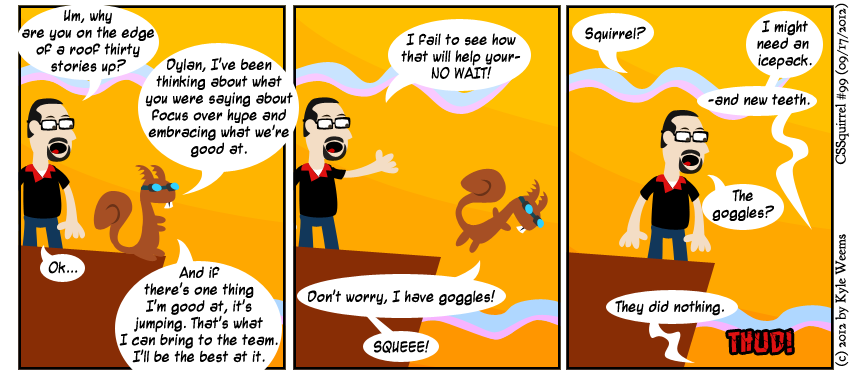Misdirection
Monday, September 24th, 2012
One word that comes to mind when I think of today’s guest star, Faruk Ateş, is passion. Anyone familiar with his Twitter account or blog might find, from time to time, passionate zeal about many things. Including Apple.
I’m not convinced a company sitting on dozens of billions of dollars of cash needs apologists. I’ve got it on good authority that they’re doing OK. But that doesn’t stop Apple fans (which today Faruk is representing) from swarming to the company’s defense at a whiff of criticism.
So I’ll clinch my butt cheeks tightly as I proceed to criticize.
The iPhone 5 is out. Along with it came iOS 6. And along with that came some interesting software changes. To put it mildly.
Let’s clear things out first. The iPhone 5 is a great, top of the line, modern phone. It’s an unbelievably light and thin piece of gossamer and wonder that represents just how crazy technology is these days. I’m not daring to imply otherwise.
But despite that, it’s also something of a catch-up phone. With the exception perhaps of its surprisingly lightweight and thin physique for a phone with its feature-set, the phone isn’t exactly sporting anything revolutionary. Yes, Tim Cook made it a point to tell us how awesome it is, really pumping it up. Which he should, because that’s his job. But he may have overstated how unprecedented the iPhone’s many new… for it… features are.
Does that make it a bad phone? Heavens, no. It’s a thoroughly impressive, gorgeous, modern phone. But it’s now part of a pack of modern phones with comparable feature sets.
Which is great. I like healthy competition.
What is less great is a few changes to the software that phone (and other iPhones, like my own 4S, that have been updated to iOS 6) have brought upon us.
Exhibit A: the new iOS Maps.
There’s probably a great reason they decided to replace Google Maps with their own self-made app. I’m thinking it involves buckets of cash and super-valuable user data. Also, it’s no surprise that the honeymoon days between those companies ended about twelve seconds after Android was introduced to the world.
But it’s shocking that Apple, who so carefully crafts experiences as mundane as removing their products from the packaging, dumped such a thoroughly substandard replacement with so many glaring errors upon us.
Dylan and I talk about this in detail during our inaugural Squirrel and Moose podcast, in case you want to hear more on that topic. But in short, it’s disappointing, and it’s not the Apple I’m used to seeing, and I’m glad that at least some of the loyal Apple followers are admitting that this is a misstep.
Because no matter how well you dress it up, a turd is a turd.
Despite how public and loud the dissatisfaction is with iOS Maps, iOS 6 presents us with something far worse that we should be paying more attention to.
That, ladies and gentlemen, is the new App Store. Read that. Please. Take a gander. Heck, if you’ve got an iDevice of some sort, go look at it yourself. Use it. Try to find new stuff. Having problems? Yeah…
This just doesn’t make sense. It’s not helping the users, it’s not helping the third party developers. It’s just bad. If you want to find a new app, and you aren’t specifically looking for something by name, have fun finding anything that isn’t a best-seller.
I’m not sure how this helps Apple, or help the iPhone user experience.
Apple is a big, rich company with lots of smart, talented employees. These missteps, and there’s plenty this time around, are so uncharacteristic that it’s baffling. Especially at a time when the competition is so strong. I’ve had an iPhone for years now, but despite its sparse app landscape I’m beginning to think about picking up a Windows Phone the next time I upgrade. iOS 6 isn’t helping convince me otherwise.
The iPhone 5 is a great phone, an evolutionary device even if it’s not a revolutionary one. It’s sold millions, and will sell millions more. But iOS 6 is a step backwards, a devolution if you will. And if Apple doesn’t double down on fixing their blunder, they’re going to run the risk of simply being one of many great smartphone makers instead of being the great smart phone maker.
[Update: Here's a new post by Jared Spool talking about iOS6 Maps and the opportunity it provides us to show the value of (and need for) investing in quality content in websites and apps.]



